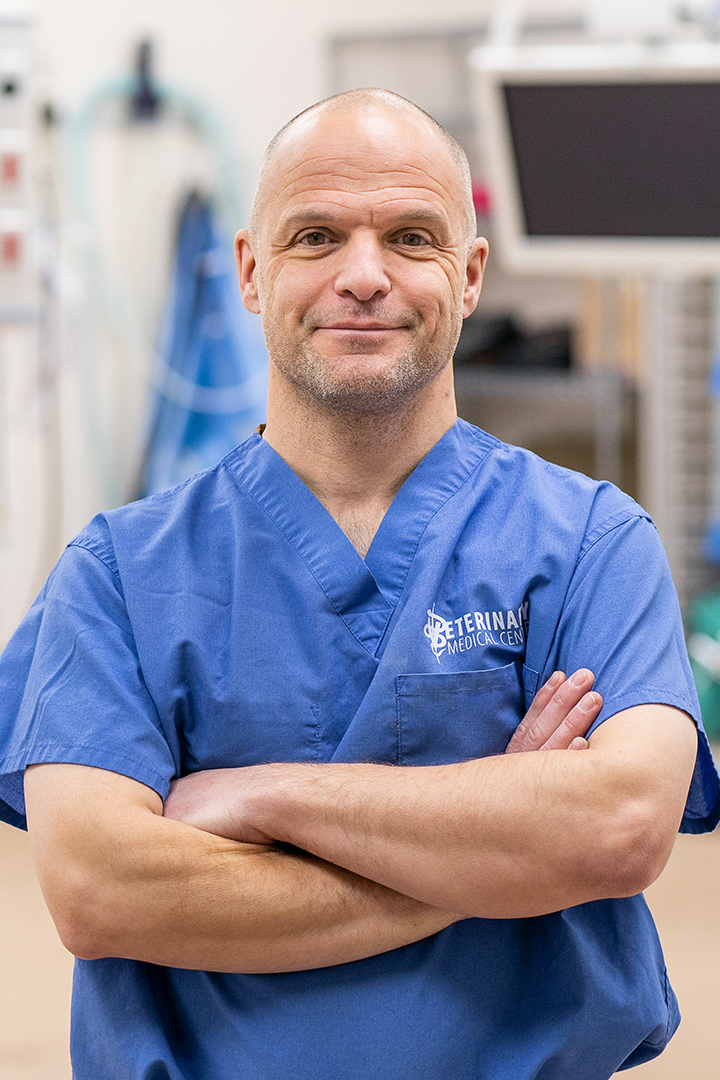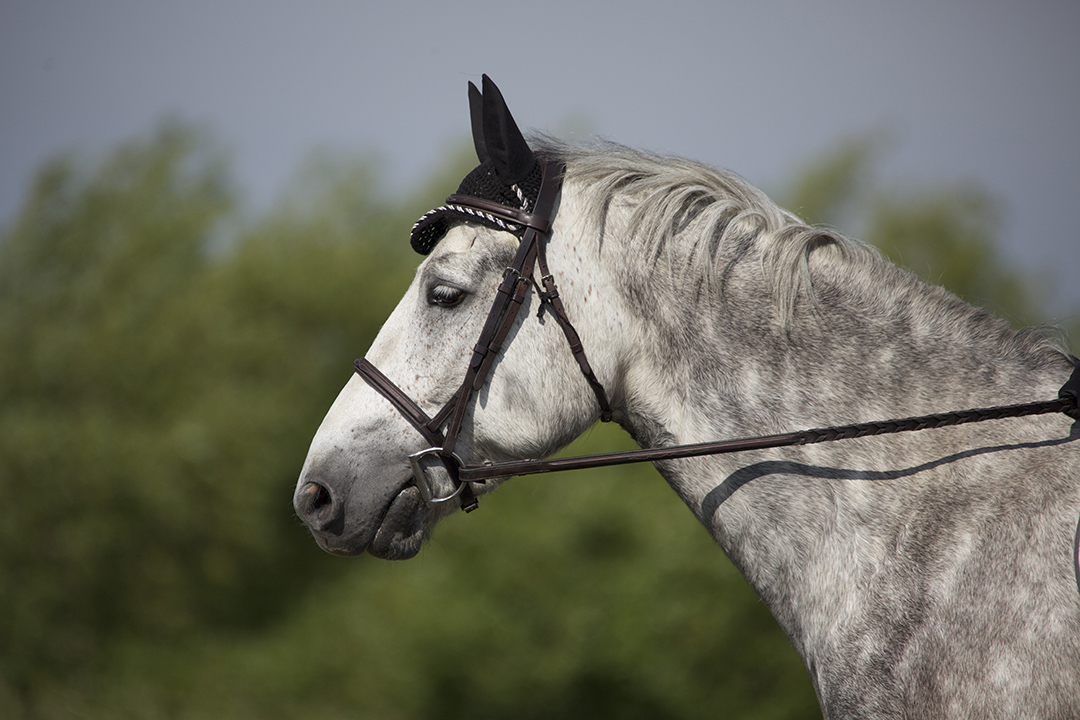
USask veterinary scientists bite into evasive equine disease
Pain in the temporomandibular joints (TMJ) — the two joints that connect the lower jaw to the skull — is a common human health issue with up to 60 per cent of adults experiencing symptoms of TMJ disease at some point in their lives.
By Lynne Gunville
It’s also a common diagnosis in dogs, cats and sheep. But up until a couple of years ago, the same couldn’t be said about horses — and that always puzzled Dr. James Carmalt (VetMB, PhD).
“If it’s happening in horses and we’re not picking it up, then maybe it could be the cause of poor performance, riding problems and eating problems,” says Carmalt, an equine specialist and scientist at the Western College of Veterinary Medicine (WCVM).
Carmalt’s curiosity led to innovative research that confirmed the occurrence of TMJ disorders in horses — an aspect of veterinary medicine that has been chronically overlooked for decades. These studies showed that equine TMJs often do show signs of cartilage degeneration and arthritis which progress with age — just as they do in humans and other species. Carmalt recently spoke about his efforts to learn more about TMJ disorders in an episode of Veterinary Vertex, a podcast produced by the American Veterinary Medical Association (AVMA).
Dr. Nathalie Reisbig (Dr.med.vet, PhD), a clinical associate in equine field service at the WCVM Veterinary Medical Centre, first became interested after encountering a case involving a horse with lameness exacerbated by TMJ issues. She was particularly intrigued by the distinctive cartilage found in the joint and the role that this cartilage plays in inflammation and healing.
“The cartilage in TMJ joints is fibrocartilage versus the cartilage in most other joints [which] is hyaline cartilage,” explains Reisbig, whose PhD degree in regenerative and translational medicine involved research targeting the healing of hyaline cartilage.
“So why does this joint have a different cartilage setup than other joints?”
With financial support from the WCVM’s Townsend Equine Health Research Fund and the Mark and Pat DuMont Equine Research Fund, Carmalt and Reisbig are comparing the basic cellular metabolisms of the fibrocartilage and the hyaline cartilage along with their cellular responses to inflammation and anti-inflammatory treatments.
In the study’s first phase, the researchers harvested fibrocartilage cells from the equine TMJ and the navicular bursa as well as hyaline cartilage cells from the stifle and the fetlock joints. Since the meniscus (shock-absorbing cartilage within joints) is composed of fibrocartilage, they also harvested cells from the meniscuses of the TMJ and the stifle.
Once these cells have multiplied to become six primary cell lines, the scientists will establish a baseline by characterizing the proteins produced by each set of cells while they’re in a stable environment. Next, they will add lipopolysaccharide (LPS), a toxin that induces cell inflammation so they can observe and compare the proteins produced by the cells under stress.
The researchers will then treat each of the six cell lines using conventional anti-inflammatory products. While a control group in each of the lines will receive only sodium chloride, two cell groups in each line will be treated with steroids — one with triamcinolone (Kenalog) and the other with methylprednisolone acetate (Depo-Medrol). They will also treat two additional groups in each line with biological cell-based therapies: one with interleukin-1 receptor antagonist protein (IRAP) and one with an autologous protein solution (Pro-Stride).
“We’re going to see the proteins that are produced … while they’re treated,” Carmalt explains. “What is the cartilage producing now that I’ve treated you with X [product]? Do you go back to baseline and back to producing what you were, or have I fundamentally damaged you? If I use steroids in hyaline cartilage, is the response to treatment different from the response in fibrocartilage?”
Although the researchers still have a lot of work ahead of them, they hope that results from this latest study will provide important information for veterinarians and their clients.
“If you have solid data saying that one treatment is better than another or has a longer effect or a more positive effect, now you have a selling point for the owners,” says Reisbig. “None of these things are cheap, and so you want to give owners an idea of what to expect. This will really help owners to make good decisions for the best of their horses.”
While this study will provide information regarding acute pain in the joints, Carmalt and Reisbig agree that there are probably many horses with chronic, undiagnosed TMJ disorders. They both hope to learn more about the actual incidence of acute and chronic equine TMJ disease through a public group page on Facebook called Equine TMJ Disease that has more than 1,500 members from around the world. Horse owners and practitioners can post comments about their experiences with potential equine TMJ disorders on this shared online platform.
“We’ve had a lot of contact with other vets who will send their X-rays or their videos or CT results, and we can discuss the next step with them,or determine whether this is really the problem or not,” says Reisbig, who stresses that the page isn’t a source for veterinary advice.
“We emphasize that owners communicate with their own vet and not us. It’s [the page is] more to start collecting information and helping people.”

While Carmalt and Reisbig are optimistic that their current study will lead to better treatment options, they’re also hopeful that their previous investigations to determine possible indicators of TMJ disease will expedite diagnosis and subsequent treatment. In September 2023, Reisbig shared findings from their recent work at the Calgary International Equine Symposium and earned the top prize of $10,000 for her platform presentation.
In this particular study, the researchers used subjective anecdotal evidence as well as objective measurements provided by rein sensors and kinematic cameras to confirm that TMJ pain causes behavioural changes — many so subtle that only the rider can detect them.
“For me, it was nice to prove that the rider’s standpoint and the rider’s feeling is incredibly important for a vet to listen to,” says Reisbig. She adds that the study’s anecdotal evidence and the rein sensors were more reliable indicators than the cameras.
“I think it’s an important lesson to us all that we shouldn’t disregard the rider’s feeling about how a horse has potentially changed.”
Based on their findings, Carmalt says veterinarians should consider adding TMJ disorders to the list of possible conditions when an equine patient shows lameness or behavioural issues. But on the other hand, there’s a danger of TMJ disorders becoming a “trendy diagnosis” — a growing tendency in certain disciplines.
To help address this issue, Carmalt recently published a paper in the Journal of the American Veterinary Medical Association that describes a logical approach to excluding common causes of poor performance in horses before investigating the potential role of TMJ disorders in cases.
Click here to read more equine health stories in the Spring 2024 issue of Horse Health Lines, newsletter for the Townsend Equine Health Research Fund (TEHRF).
Together, we will undertake the research the world needs. We invite you to join by supporting critical research at USask.
